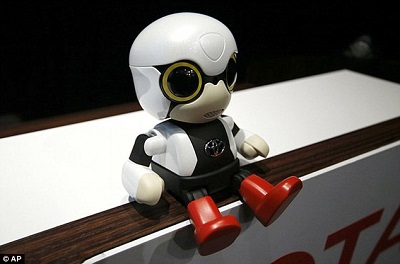Driven by a declining population, a trend for developing robotic babies has emerged in Japan as a means of encouraging couples to become ‘parents’.
The approaches taken vary widely and are driven by different philosophical approaches that also beg a number of questions, not least whether these robo-tots will achieve the aim of their creators.
So, what are the different design approaches that are being taken to encourage more people to become parents?
These have ranged from robots that mimic or represent the behaviour of a baby through to robots that look much more lifelike.
Engineers recently launched Kirobo Mini, for example, as a means of promoting an emotional response in humans.
The robot does not look like a baby, but instead models ‘vulnerable’ baby-like behaviours including recognising and responding to people in a high-pitched tone and being unstable in its movements.
At the other end of the spectrum is Yotaro, a robotic baby simulator that uses projection technology for its face so it can simulate emotions and expressions.
The simulator also models reaction to touching, mood and even illness through an in-built runny nose.
As well as aiming to promote a growth in population, researchers are also aiming to prepare young couples for the longer term needs of a child as it grows.
Robots have been developed to represent children in a range of age groups, from ‘nine-month-old’ Noby to ‘two-year-old’ toddlers such as CB2 (although the latter is the output of research exploring the development of a biometric body).
While much focus has been on what goes into a baby robot, there are potential emotional issues for ‘parents’.
There have been a number of studies that have examined the relationship between humans and robots.
Researchers have discovered a high degree of bonding can form between the two, a bond that is strengthened when the device is a social robot which may have a human-like appearance or portray human-like behaviours.
Source: Daily mail
N.H.Kh

